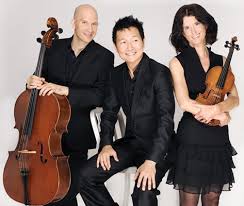Bourgie Hall. February 11th concert
From the very first concerto highlighting the Teatro Alla Moda theme in Arion’s third concert of the season, the composer Evaristo Felice Dall’Abaco proved to be the perfect choice to contrast February’s dreary weather. Sweet subtle inflections of delicately executed pairings of strings with harpsichord- harmonizing created a stylish French lightness . Rhythmically uplifting, this concerto in D major put us all in a spirited mood exemplified by the guest violinist Amandine Beyer.
From the very first concerto highlighting the Teatro Alla Moda theme in Arion’s third concert of the season, the composer Evaristo Felice Dall’Abaco proved to be the perfect choice to contrast February’s dreary weather. Sweet subtle inflections of delicately executed pairings of strings with harpsichord- harmonizing created a stylish French lightness . Rhythmically uplifting, this concerto in D major put us all in a spirited mood exemplified by the guest violinist Amandine Beyer.
Indeed, her casual manner of dress and winning, warm smile made us feel we had been invited to an informal cheerful gathering of gorgeous baroque music.
The second offering was by Francesco Maria Veracini . Moving
into a minor key, it was really interesting as the two flutes - beautifully played by Claire Guimond and Alexa Raine-Wright - profoundly
delved into plaintive emotions that lushly contrasted with sparse yet impeccable plucking on
the strings.
We were introduced to
composers whose works swelled both with joy quelled by passages of melancholy.
These gifted Italian-born geniuses included Albinoni, Marcello, Locatelli and
Gallo. In each work the orchestra expressed a cohesive instinctive understanding
in the music. This affinity stunningly conveyed varying emotional intensity.
The final piece highlighted Ms. Beyer’s virtuoso playing as
she tackled Vivaldi’s Concerto in E minor for violin, strings and double bass. Tempestuous
in parts, ghostly, moody, and furiously feverish, this, exciting work surely embodies the prolific composer’s dramatic
side. We must remember that though styles of music have changed throughout the
centuries, human beings’ emotions have not. What a thrilling combination to
hear 400-year-old music performed by brilliant musicians – artists whose emotional depth captures this span of centuries the moment
their bows touch their instruments!
Arion Baroque Orchestra’s next concert takes place April 11
-15. Bach, Handel, Quantz and Telemann are featured along with guest soloist
Boris Begelman.
The website is www.arionbaroque.com.
The website is www.arionbaroque.com.
Call (514) 355-1825.





















